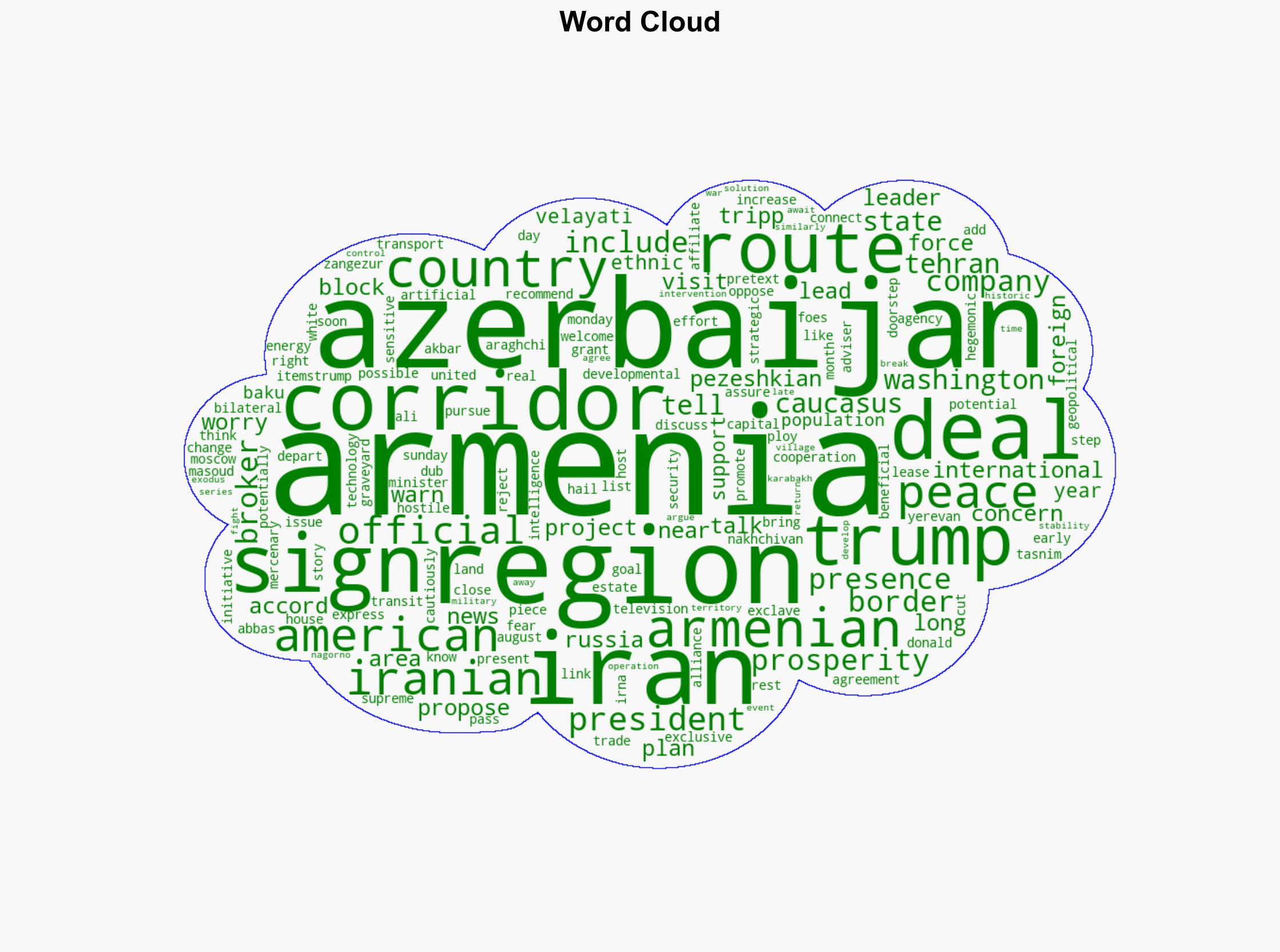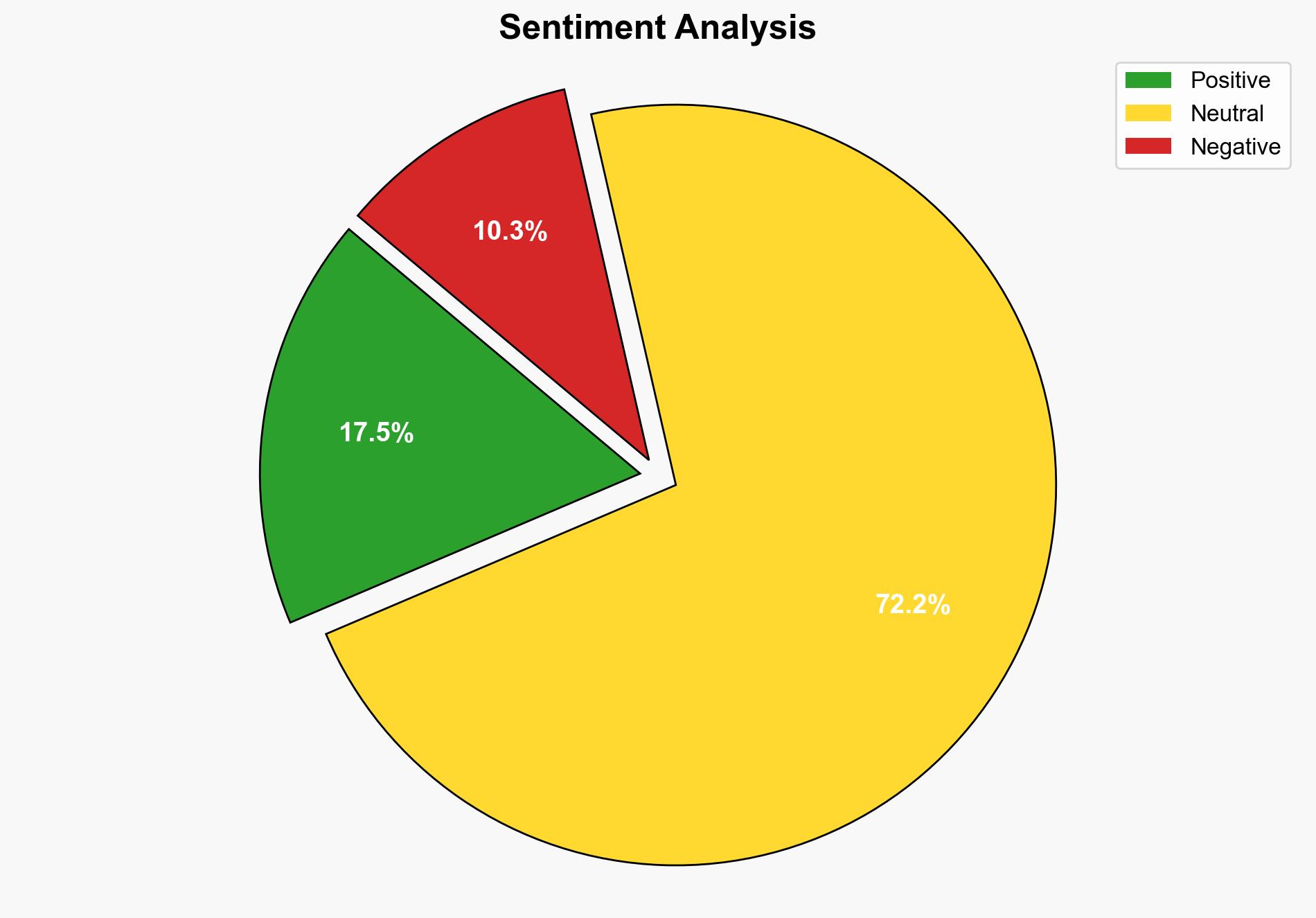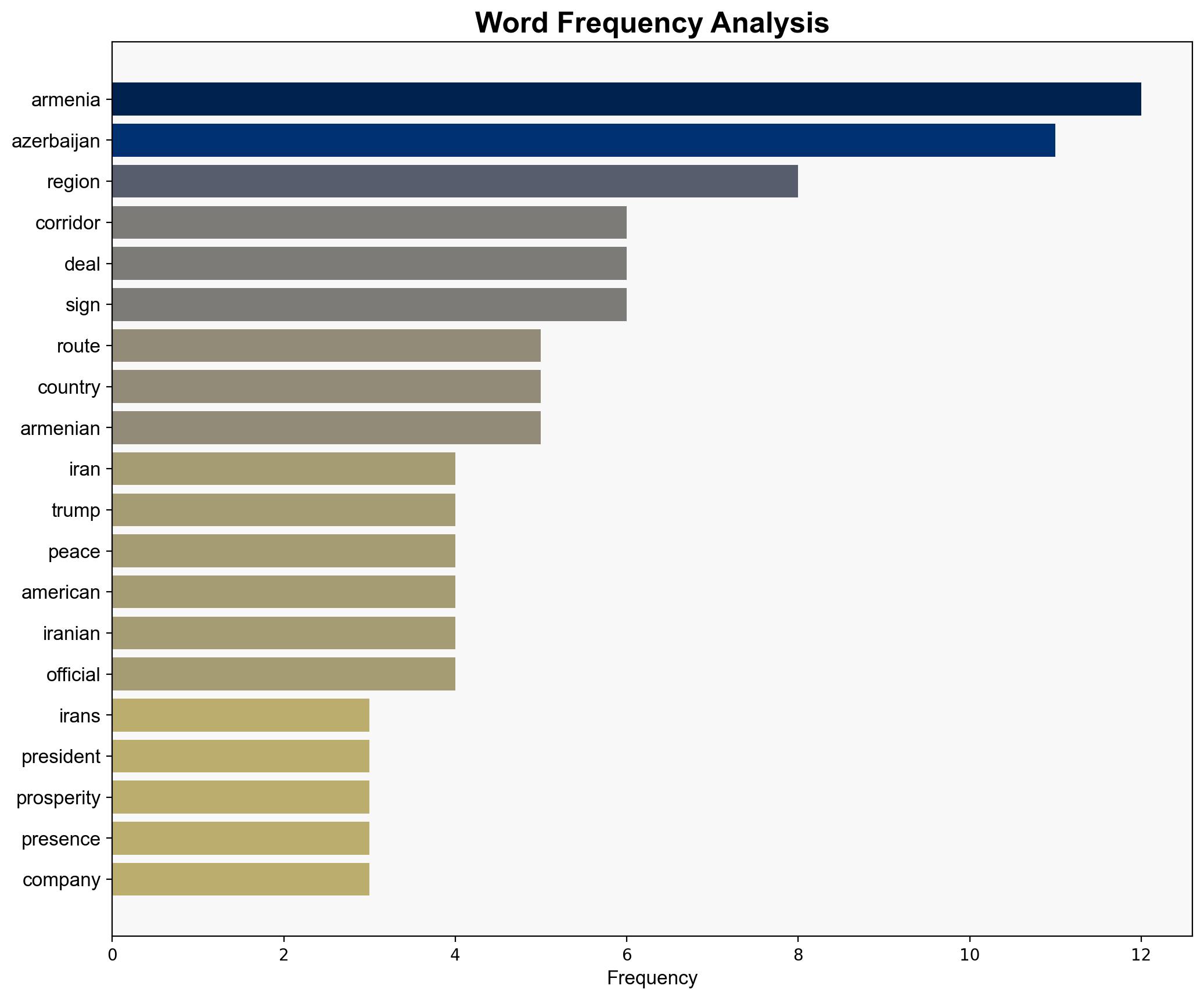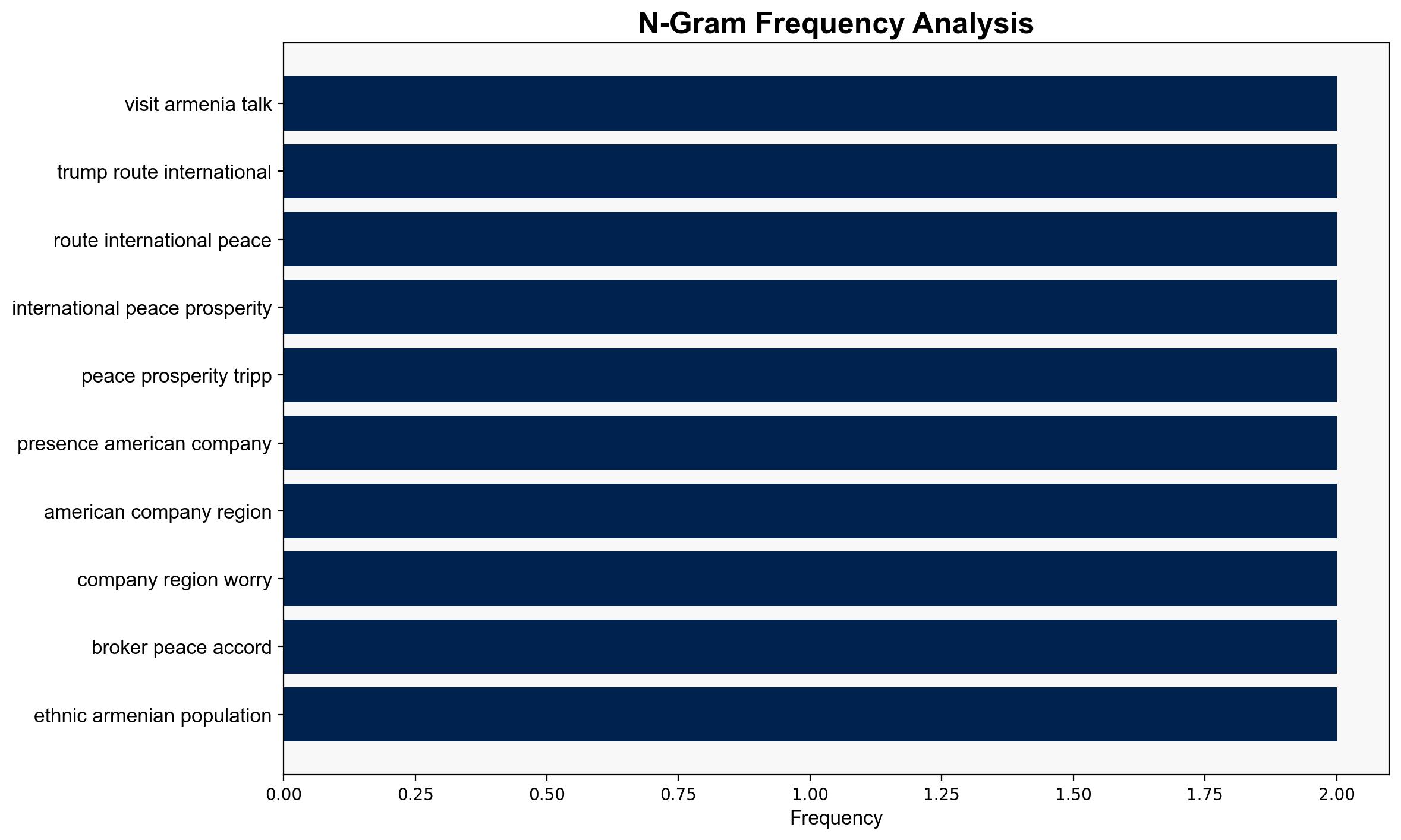Irans president visits Armenia for talks on US-backed Azerbaijan corridor – Al Jazeera English
Published on: 2025-08-18
Intelligence Report: Iran’s President Visits Armenia for Talks on US-Backed Azerbaijan Corridor
1. BLUF (Bottom Line Up Front)
The most supported hypothesis is that Iran’s opposition to the US-backed corridor is driven by strategic concerns over increased US influence near its borders and the potential geopolitical shift in the Caucasus region. Confidence level: Moderate. Recommended action: Monitor regional developments closely and engage in diplomatic dialogues to address Iran’s security concerns while promoting regional stability.
2. Competing Hypotheses
1. **Hypothesis A**: Iran’s opposition is primarily due to strategic concerns about US influence and potential military presence near its borders, which could threaten its national security and regional influence.
2. **Hypothesis B**: Iran’s stance is more about maintaining its influence over Armenia and Azerbaijan, fearing that the corridor could diminish its role in regional trade and energy routes.
Using ACH 2.0, Hypothesis A is better supported due to Iran’s historical opposition to foreign military presence near its borders and its consistent rhetoric against US influence in the region. Hypothesis B is less supported as the economic implications, while significant, are secondary to the strategic military concerns.
3. Key Assumptions and Red Flags
– **Assumptions**: Iran perceives any US presence as a direct threat. Armenia’s assurances of no US military presence are accurate.
– **Red Flags**: Lack of detailed information on the exact nature of US involvement and potential military aspects of the corridor. Possible bias in Iranian statements emphasizing security threats.
– **Blind Spots**: The internal political dynamics within Iran that might influence its foreign policy stance.
4. Implications and Strategic Risks
– **Geopolitical**: Increased tensions between Iran and the US, potentially drawing in Russia and other regional powers.
– **Economic**: Disruption in regional trade routes if Iran takes retaliatory actions.
– **Security**: Potential for military escalation if Iran perceives an imminent threat.
– **Psychological**: Heightened nationalistic sentiments within Iran, influencing public opinion and policy.
5. Recommendations and Outlook
- Engage in multilateral talks involving Iran, Armenia, Azerbaijan, and the US to address security concerns and ensure transparency in the corridor’s development.
- Scenario-based projections:
- Best: Successful diplomatic resolution, leading to regional cooperation.
- Worst: Escalation of tensions leading to military confrontations.
- Most Likely: Continued diplomatic standoff with periodic negotiations.
6. Key Individuals and Entities
– Masoud Pezeshkian
– Abbas Araghchi
– Ali Akbar Velayati
7. Thematic Tags
national security threats, geopolitical tensions, regional stability, US-Iran relations





